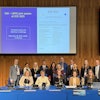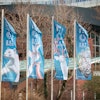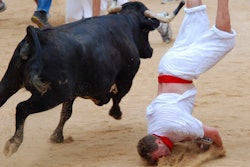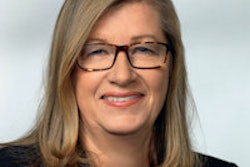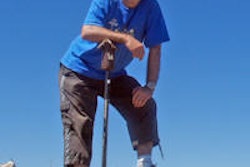
Dr. José Ignacio Bilbao will become the first Spanish president of the European Congress of Radiology (ECR) next month. He cares deeply about training and education, and has some strong views about the future of interventional radiology. Outside of work, he has a passion for architecture and good food.
AuntMinnieEurope.com: Can you tell us a bit about your hospital?
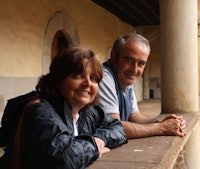 During a rare work-free weekend, Dr. José Ignacio Bilbao loves to indulge his passion for historic buildings and spend time with his wife Beatriz, who is also physician. All images courtesy of Dr. José Ignacio Bilbao.
During a rare work-free weekend, Dr. José Ignacio Bilbao loves to indulge his passion for historic buildings and spend time with his wife Beatriz, who is also physician. All images courtesy of Dr. José Ignacio Bilbao.
Bilbao: Our hospital -- Clínica Universidad de Navarra (CUN) -- is part of the Facultad de Medicina, or School of Medicine, and it belongs to Spain's biggest private university, Universidad de Navarra. CUN has just celebrated its 50th anniversary. It has grown continuously, and now all medical specialties are included in its training programs for young doctors.
We have active programs for cardiac, liver, and kidney (both cadaveric and living donor) transplantation, and we are in direct contact with many other institutions from our university, such as the Center of Advanced Medical Research (CIMA) and the School of Engineering (Master of Bioengineering). Such interaction allows us to have different research programs that are also interconnected with different national and international networks and groups.
The hospital has around 300 beds, and the number of outpatients per year exceeds 100,000. Most of our activity is on an outpatient or 24/7 hospitalization basis.
How have you developed and built up your own department?
Members of our radiology department are fully integrated in different multidisciplinary teams. We have very active involvement in undergraduate training, and the complete program of the medical school includes radiology as a core subject in three different years (second, fourth, and fifth) and as an option (interventional radiology) in the sixth year.
Our doctors are divided into organ-based groups, and, at this moment, the team includes 18 senior radiologists, eight residents, and a variable number of fellows and residents who come from other national or international institutions. The staff also includes nurses, radiographers, and secretaries; the total number of people working in radiology is around 70.
Our equipment is evolving all the time. We have three MR systems, and as far as I know, the 3-tesla machine was the first to be installed in Spain. We have three CT scanners --16- and 64-detector row and dual-energy -- and six ultrasound units, one of which is in the surgical area because we perform all k-nds of intraoperative ultrasound procedures.
Nuclear medicine, with whom we work closely, has a PET/CT system that incorporates 64-detector-row CT, and has its own cyclotron. We also have two rooms for interventional radiology, and a new area is likely to open in summer 2013 in which vascular surgeons, cardiologists, and radiologists will work together in hybrid rooms. The idea is to have four new rooms, and we are really hoping this will go ahead.
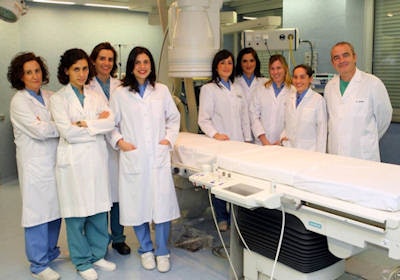 Bilbao and his colleagues are shown in the angiography suite at Clínica Universidad de Navarra.
Bilbao and his colleagues are shown in the angiography suite at Clínica Universidad de Navarra.How are Spain's well-documented economic difficulties affecting you?
In spite of all the recent problems that we often read about in the media, the Spanish public health system is very good, and it has outstanding medical teams that deliver good service and care to the population. Nevertheless, the private health sector is growing fast, and more and more people are choosing this service.
The CUN is the biggest and probably the most renowned and well-recognized private institution in Spain, mainly because we combine good medical service, which is always provided by a team, with updated technology and the strong presence of teaching and research in our daily work. This helps to ensure that we continue to grow and develop.
How and when did you first get involved in interventional radiology? How has interventional radiology developed in Spain?
When I finished my medical studies in 1979, I had to choose my specialty directly. I had important doubts about which should I select. I liked surgery, but I was impressed by the beauty and mystery of radiological images. I finally decided upon radiology, and have always been happy about making such a selection.
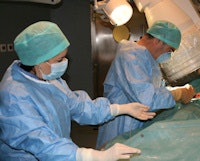 Bilbao's keen interest in interventional radiology began during the third year of his residency in 1982.
Bilbao's keen interest in interventional radiology began during the third year of his residency in 1982.
In the third year of my residency in 1982, I began to be attracted by the new way to perform interventions through percutaneous and endovascular approaches, and for a few months I went to the MD Anderson Center in Houston, Texas, U.S. There I took an important decision, which was that I would like to be completely involved in interventional radiology (IR), and with the great support of the CUN, this is what I have done for the rest of my professional life.
At that time, there were only a few active groups in Spain, led by Drs. Rius, Maynar, Tobio, and others. In 1986, 26 Spanish interventional radiologists founded the Spanish Society of Vascular and Interventional Radiology (SERVEI). Our first meeting was held in Toledo in 1989, and I became president in 1992. We often take part in national meetings, on some occasions with our Portuguese colleagues, and we now have around 250 members.
Our independent IR society is probably one of the oldest in Europe, and our relationship with the Spanish Society of Radiology (SERAM) is good. In spite of not having -- or very seldom having -- subspecialty recognition in terms of training and specific working places, we are well-accepted and in most cases fully supported by other radiologists.
The quality of Spanish IR is high, and several groups are fully involved in the most advanced procedures and areas of research. We are all members of the Cardiovascular and Interventional Radiological Society of Europe (CIRSE), and CIRSE looks at Spain as an excellent country, being the host of the annual congress in 1992, 2004, 2010, and 2013. Spanish members are more and more actively involved in the scientific and educational programs.
What needs to be done to raise standards and improve quality of care in IR?
If we want to have interventional radiologists who are fully involved in the care of patients and who know about the special characteristics of percutaneous/endovascular interventions, and who also understand the multidisciplinary approach and who have enough skills to learn how the interventional procedures should be done, then we have to pay very special attention to undergraduate training in medical schools.
This is what we try to do: We teach and show, from the very first years of medical school, not only that "we exist," but also that there are novel ways to give high-quality care to a large number of patients. When a young colleague applies for a position of resident in radiology, he or she knows (or should know) that IR is a nice alternative for the future. In fact, many of them go to radiology because they are keen to enter IR.
The training program for radiology in Europe is five years, but this is not yet the case in Spain. Both the European Society of Radiology (ESR) and CIRSE are in the process of adapting their training needs and curricula for general and interventional radiologists in order to maintain the access to IR from radiology.
I constantly find that my basic training in general radiology has been fundamental in my daily work. I have very solid collaboration with some radiologists from my department, and with them I try to look for the best diagnosis and the best way to treat a patient, but also I work closely with other disciplines, such as surgeons, internists, anesthetists, and pathologists, with whom we try to work as teams devoted to deliver care to specific situations.
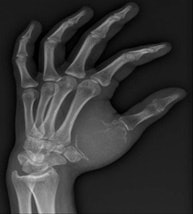
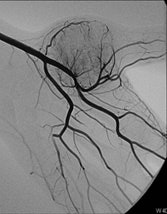
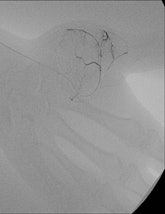
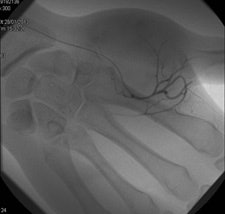
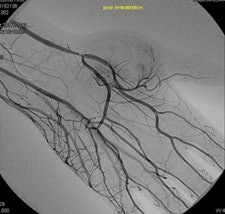
What are your personal interests outside of radiology? How do you relax and unwind?
My professional activities take a very big part of my time, but I do enjoy clinical practice and teaching. Since 1992 I have been involved in the work of different societies, including SERVEI, SERAM, CIRSE, and ESR, and from these activities I have learned a lot and I have made many friends in different parts of the world.
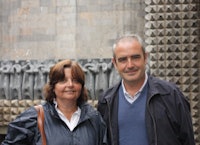 "I like the feeling of the stones," Bilbao said. In this photo, he and Beatriz are shown during a visit to Nuestra Señora de Aránzazu, in the Basque Country.
"I like the feeling of the stones," Bilbao said. In this photo, he and Beatriz are shown during a visit to Nuestra Señora de Aránzazu, in the Basque Country.
Outside of work, I try to relax with my family. I like cooking; it is quite relaxing, and absorbs you from the very first moment. On holiday and during every weekend that I am at home, I go to the market early in the morning and decide what we are going to eat for lunch and/or dinner. While doing that, I just think, speak, and work on it -- as many other people from the north of Spain do!
I also try to read as often as possible about Romanesque art and architecture, and the Middle Ages. I really enjoy these subjects, and I have visited many, many large and small churches, chapels, monasteries, castles, and cathedrals all over the north of Spain, from Catalonia to Galicia. I like the feeling of the stones. They transmit to you the message of the person who first worked with them.
I am always thinking ahead about the next weekend when, together with my wife Beatriz, we will have the opportunity to look and feel those buildings and the impressive silence that surrounds them. Incidentally, we have frequently observed that not far from these buildings you can find excellent restaurants with unique qualities!


